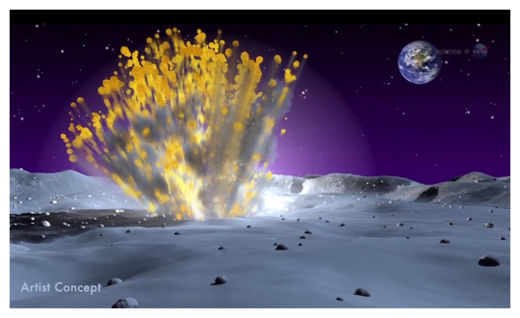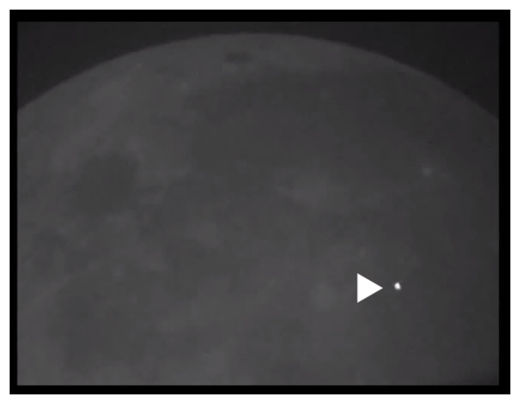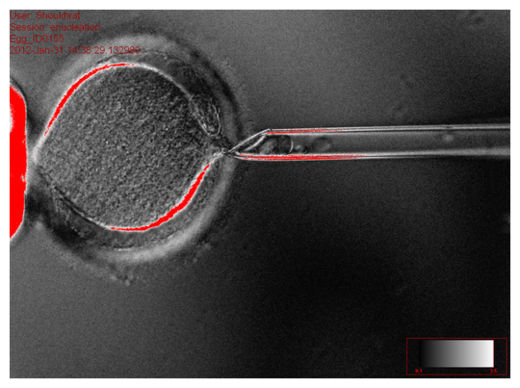
© NASAThis artist's illustration shows a meteor crashing into the surface of the moon. Scientists say hundreds of space rocks impact the lunar surface every year.
The moon has a new hole on its surface thanks to a boulder that slammed into it in March, creating the biggest explosion scientists have seen on the moon since they started monitoring it.
The meteorite crashed on March 17, slamming into the lunar surface at a mind-boggling 56,000 mph (90,000 kph) and creating a new crater 65 feet wide (20 meters).
The crash sparked a bright flash of light that would have been visible to anyone looking at
the moon at the time with the naked eye, NASA scientists say.
"On March 17, 2013, an object about the size of a small boulder hit the lunar surface in Mare Imbrium," Bill Cooke of NASA's Meteoroid Environment Office said in a statement.
"It exploded in a flash nearly 10 times as bright as anything we've ever seen before."

© NASAThis photo shows the bright flash of the light that resulted from a huge boulder slamming into the moon's surface March 17, 2013.
NASA astronomers have been monitoring the moon for lunar meteor impacts for the past eight years, and haven't seen anything this powerful before.
Scientists didn't see the impact occur in real time. It was only when Ron Suggs, an analyst at NASA's Marshall Space Flight Center in Huntsville, Ala., reviewed a
video of the bright moon crash recorded by one of the moon monitoring program's 14-inch telescopes that the event was discovered.
"It jumped right out at me, it was so bright," Suggs said.
Scientists deduced the rock had been roughly 1-foot-wide (between 0.3 to 0.4 meters) and weighted about 88 lbs (40 kg).The explosion it created was as powerful as 5 tons of TNT, NASA scientists said.
When researchers looked back at their records from March, they found that the moon meteor might not have been an isolated event.





Comment: It's rather nice of NASA to just now inform us of this though there were rumors of this event and nothing to attach to it at the time from the MSM. Just for fun, take a peek at the large number of meteor sightings here on the BBM around that same time.